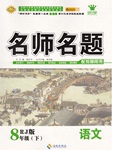
【题目】下列词语中加点的字,注音全部正确的一项是( )
A.数罟(cù) 洿池(kuā) 弃甲曳兵(yè)
B.孝悌(tì) 饿莩(fú) 养生丧死(sānɡ)
C.狗彘(zhì) 鸡豚(tún) 庠序之教(xiánɡ)
D.衣帛(bó) 畜(chù)养 请以战喻(yù)
 优学名师名题系列答案
优学名师名题系列答案科目:高中地理 来源: 题型:
【题目】Look! Here is our new flat. We can get a wonderful ________ from our window.
sight
photo
view
scenery
查看答案和解析>>
科目:高中地理 来源: 题型:
【题目】阅读下面两首诗,完成(1)~(3)题。
马嵬(其二)
李商隐
海外徒闻更九州,他生未卜此生休。
空闻虎旅传宵柝,无复鸡人报晓筹。
此日六军同驻马,当时七夕笑牵牛。
如何四纪为天子,不及卢家有莫愁。
马嵬坡
郑 畋
玄宗回马杨妃死,云雨难忘日月新。
终是圣明天子事,景阳宫中又何人。
(1)从题材上看,这两首诗都属于 诗,且都是以 事件为题材。
(2)对这两首诗的赏析不正确的一项是( )
A.“此日六军同驻马,当时七夕笑牵牛”是指军队发生哗变,而在这五年前的七月七日曾海誓山盟永为夫妇。言沉溺声色之当年,何尝料及不能保其宠爱至今日。极具讽刺意味。
B.“如何四纪为天子,不及卢家有莫愁”这两句在对比中嘲讽了唐玄宗的“七夕笑牵牛”,还不
C.《马嵬坡》一诗后两句以议论作结,不言陈后主而言“何人”有不屑之意,直抒胸臆,盛赞唐玄宗在危亡之际识大体,有决断,堪称“圣明”。
D.这两首诗在写法上有相似之处,讽刺意味处处隐在。
(3)有人评论说《马嵬坡》一诗虽嘲讽了唐玄宗,但也表现了对他的同情。说说看哪些诗句表现了同情。(2分)
查看答案和解析>>
科目:高中地理 来源: 题型:
【题目】【1】 换句话说 __________________________________________________
【2】 适应 __________________________________________________
【3】 总而言之 __________________________________________________
【4】和;也 __________________________________________________
【5】取笑 __________________________________________________
【6】cut out __________________________________________________
【7】 out of breath __________________________________________________
【8】sit around __________________________________________________
【9】in many ways __________________________________________________
【10】 play a major part in __________________________________________________
查看答案和解析>>
科目:高中地理 来源: 题型:
【题目】下列句子中加点词语解释错误的一项是( )
A.寡人(古代国君的谦称) 河内(黄河以北的地方)凶
B.不加(更)少 弃甲曳兵(拖着兵器)而走
C.填然鼓(敲着战鼓,动词)之 兵刃(锋刃)既接
D.直(只是、不过)不百步耳 是亦走(行路)也
查看答案和解析>>
科目:高中地理 来源: 题型:
【题目】I soon found that the work I was doing had al-ready been done by someone else. __________,I was wasting my time.
A. In particular
B. All in all
C. In other words
D. After all
查看答案和解析>>
科目:高中地理 来源: 题型:
【题目】阅读下面的文言文,完成下列各题。
寡人之于国也
梁惠王曰:“寡人之于国也,尽心焉耳矣。河内凶,则移其民于河东,移其粟于河内;河东凶亦然。察邻国之政,无如寡人之用心者。邻国之民不加少,寡人之民不加多,何也?”
孟子对曰:“王好战,请以战喻。填然鼓之,兵刃既接,弃甲曳兵而走。或百步而后止,或五十步而后止。以五十步笑百步,则何如?”
曰:“不可!直不百步耳,是亦走也。”
曰:“王如知此,则无望民之多于邻国也。
“不违农时,谷不可胜食也;数罟不入洿池,鱼鳖不可胜食也;斧斤以时入山林,材木不可胜用也。谷与鱼鳖不可胜食,材木不可胜用,是使民养生丧死无憾也。养生丧死无憾,王道之始也。
“五亩之宅,树之以桑,五十者可以衣帛矣。鸡豚狗彘之畜,无失其时,七十者可以食肉矣。百亩之田,勿夺其时,数口之家可以无饥矣;谨庠序之教,申之以孝悌之义,颁白者不负戴于道路矣。七十者衣帛食肉,黎民不饥不寒,然而不王者,未之有也。
“狗彘食人食而不知检,涂有饿莩而不知发,人死,则曰:‘非我也,岁也。’是何异于刺人而杀之,曰:‘非我也,兵也?’王无罪岁,斯天下之民至焉。”
【1】对下列句中加点的词语的解释,不正确的一项是( )
A.河东凶亦然 凶:荒年。
B.鸡豚狗彘之畜 畜:畜养。
C.狗彘食人食而不知检 检:约束。
D.王无罪岁 罪:作恶。
【2】下列句子中的加点词,意义相同的一项是( )
A.邻国之民不加少 牺牲玉帛,弗敢加也
B.直不百步耳 系向牛头充炭直
C.弃甲曳兵而走 斩木为兵,揭竿为旗
D.不违农时,谷不可胜食也 日出江花红胜火
【3】下列对原文有关内容的概括和分析,不正确的一项是( )
A.孟子认为梁惠王虽然有“移民移粟”的小恩小惠,与邻国统治者的治国不尽心在实
质上没有区别,是“百步”与“五十步”的关系。
B.孟子的“王道”理想是“不违农时”“数罟不入洿池”“斧斤以时入山林”,使民
生有保障,能够解决老百姓的生老病死等问题。
C.孟子用“狗彘食人食而不知检”和“涂有饿莩而不知发”对比,意在突出梁惠王把
“涂有饿莩”的现状归罪于荒年,如同把杀人归罪于武器一样荒唐。
D.《寡人之于国也》一文具有雄辩的气势,表现在语言上注重排比的运用,如在论述
“使民加多”的道理时,通过排比的运用,使文章音节铿锵,气势充沛。
【4】把文中画横线的句子翻译成现代汉语。。
(1)寡人之于国也,尽心焉耳矣。
译文:
(2)养生丧死无憾,王道之始也。
译文:
查看答案和解析>>
科目:高中地理 来源: 题型:
【题目】Life is difficult.
It is a great truth because once we truly understand and accept it, then life is no longer difficult.
Most people do not fully see this truth. Instead they complain(抱怨) about their problems and difficulties as if life should be easy. It seems to them that difficulties stand for a special kind of suffering especially forced on them or else on their families, their class, or even their nation.
What makes life difficult is that the process of facing and solving problems is a painful one. Problems, depending on their nature, cause sadness, or loneliness(孤独) or regret or anger or fear. These are uncomfortable feelings, often as painful as any kind of physical pain. And since life causes a lot of problems, life is always difficult and is full of pain as well as joy.
Yet, it is in this whole process of solving problems that life has its meaning. Problems are the serious test that tells us success from failure. When we want to encourage the growth of human spirit, we encourage the human ability to solve problems, just as in school we set problems for our children to solve. It is through the pain of meeting and working out problems that we learn. As Benjamin Franklin said, "Those things that hurt, instruct(指导)." It is for this reason that wise people learn not to fear but to welcome the pain of problems.
【1】From the passage, it can be inferred that_______.
A.everybody has problems
B.we become stronger by facing
C.life is difficult because our problems bring us pain
D.people like to complain about their problems
【2】 The writer probably used just one short sentence in the first paragraph to ___.
A. save space
B. persuade readers
C. make readers laugh
D. get readers' attention
【3】 The main idea of paragraph 3 is that _________.
A. most people feel life is easy
B. the writer feel life is easy
C. the writer likes to complain about his problems
D. most people complain about how hard their lives are
【4】 According to the passage, we give school children difficult problems to solve in order to ______.
A. encourage them to learn
B. teach them to fear the pain of solving the problems
C. help them learn to deal with pain
D. teach them how to respect problems
【5】 The saying from Benjamin Franklin "Those things that hurt, instruct" suggests that ______.
A. we do not learn from experience
B. we do not learn when we are in pain
C. pain teaches us important lessons
D. pain cannot be avoided
查看答案和解析>>
湖北省互联网违法和不良信息举报平台 | 网上有害信息举报专区 | 电信诈骗举报专区 | 涉历史虚无主义有害信息举报专区 | 涉企侵权举报专区
违法和不良信息举报电话:027-86699610 举报邮箱:58377363@163.com